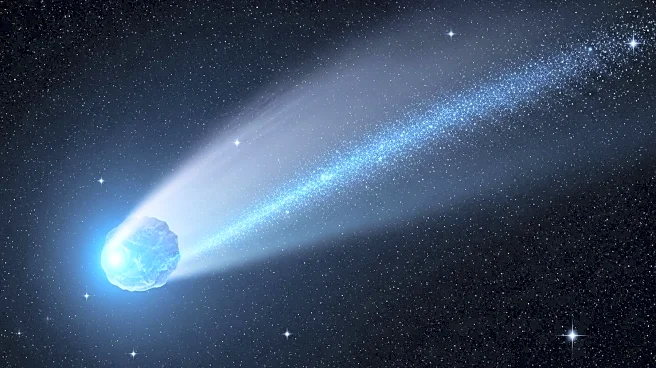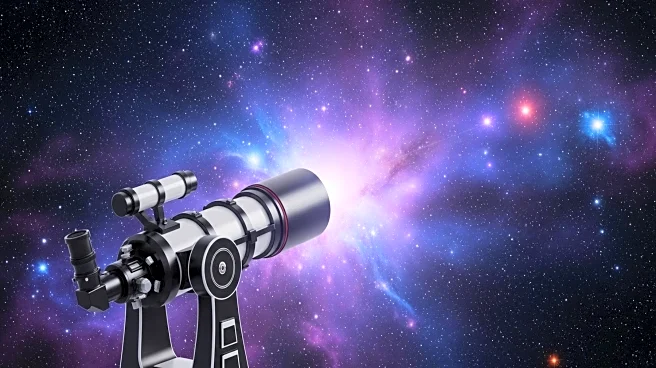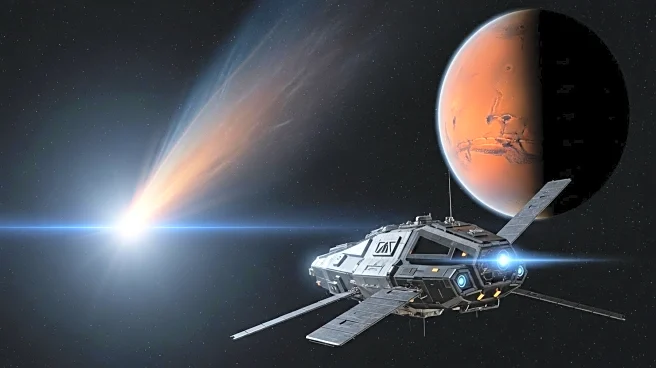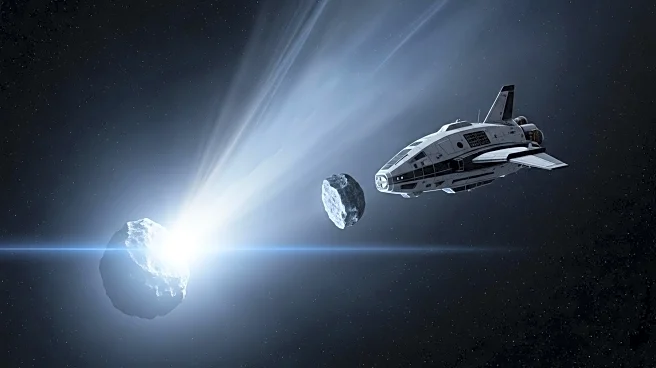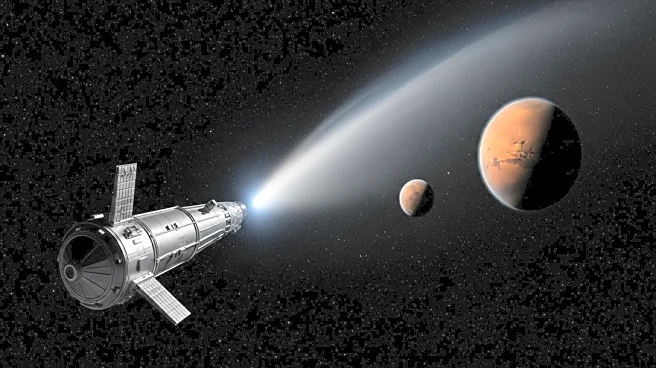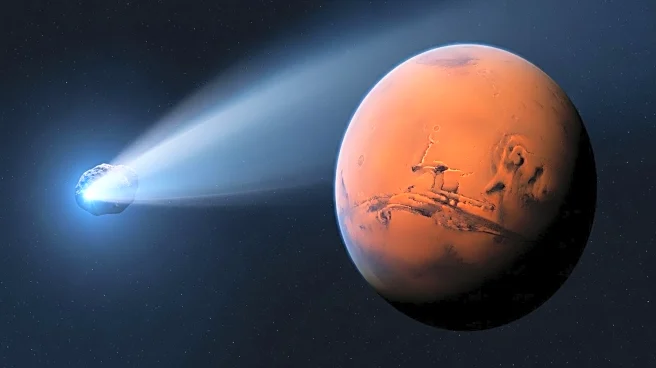What's Happening?
The interstellar comet 3I/ATLAS has been observed shedding water at an extraordinary rate, akin to a fire hose on full blast, before nearing the sun. This discovery, made using the Neil Gehrels Swift Observatory, reveals that the comet is losing about 88 pounds of water per second. The comet's activity provides insights into the distribution of life's building blocks across planetary systems. The study, published in The Astrophysical Journal Letters, suggests that 3I/ATLAS is one of the largest and possibly oldest comets ever observed.
Why It's Important?
The findings are significant as they challenge existing models of comet behavior and the conditions under which water vaporizes. Understanding the composition and activity of interstellar comets can offer clues about the formation of planetary systems and the potential for life beyond Earth. This discovery could lead to a reevaluation of how comets contribute to the distribution of organic compounds in the universe, impacting theories about the origins of life.
What's Next?
Researchers will continue to study 3I/ATLAS using various telescopes to refine their understanding of its size, trajectory, and composition. Future observations may reveal more about the comet's origins and its role in the cosmic distribution of water and organic materials. This could lead to new insights into the diversity of cometary environments and their impact on planetary system formation.
Beyond the Headlines
The study of interstellar comets like 3I/ATLAS offers a unique opportunity to explore the chemical diversity of the universe. It suggests that the ingredients for life may be more widespread than previously thought, potentially altering our understanding of life's potential beyond Earth. This could influence future astrobiological research and the search for extraterrestrial life.

